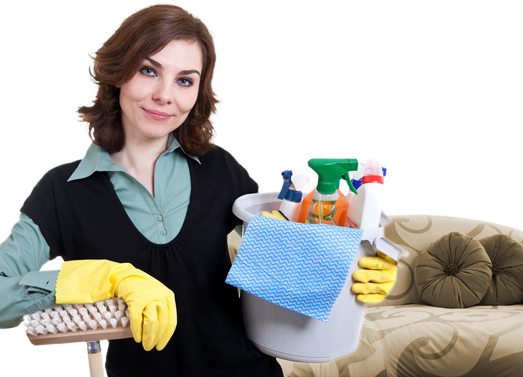Fostering Wellness with Ideal Air Quality in Your Home
Posted on 07/09/2025
Fostering Wellness with Ideal Air Quality in Your Home
Creating a healthy home environment is more than just managing clutter and cleaning. At its core, fostering wellness revolves around ensuring optimal air quality levels indoors. Poor indoor air can seriously impact your family's health, affecting everything from allergies to sleep quality. On the flip side, maintaining ideal air quality can promote wellness, comfort, and productivity. In this comprehensive article, we'll explore the importance of home air quality, the risks of neglect, and actionable strategies for improvement.
Why Is Indoor Air Quality Essential for Well-Being?
We often think of pollution as an outdoor problem. However, the Environmental Protection Agency (EPA) believes indoor air pollution can be two to five times higher than outdoor air levels. Since most people spend up to 90% of their time indoors, maintaining ideal air quality at home becomes essential.
The Hidden Dangers of Poor Indoor Air Quality
- Respiratory Issues - Dust, mold spores, pet dander, and volatile organic compounds (VOCs) are common indoor triggers for asthma and allergies. Prolonged exposure can even result in chronic bronchitis or worsen existing lung conditions.
- Lack of Sleep - Stale or polluted air impacts your body's natural sleep rhythms, often leading to disturbed or poor-quality sleep.
- Weakened Immunity - Exposure to pollutants forces your immune system to work harder, making it less effective at fighting other pathogens.
- Cognitive and Mood Issues - Poor air circulation and high CO2 levels have been linked to headaches, reduced concentration, and general fatigue.
- Long-term Health Risks - Long-term exposure to hazardous compounds like radon or benzene can increase cancer risks.
By recognizing the profound effect of ideal home air quality on overall health, families can take proactive steps to foster wellness at home.

What Determines Ideal Air Quality in a Home?
To achieve great air quality indoors, it helps to understand the main factors at play:
- Ventilation - Sufficient airflow prevents pollutant build-up and maintains a comfortable humidity level.
- Humidity Control - Ideal humidity levels (typically 30-50%) inhibit mold growth and dust mite populations.
- Temperature Regulation - Stable temperatures help prevent condensation and the proliferation of biological contaminants.
- Filtration & Purification - Efficient air filters and purifiers trap dust, allergy-causing particles, and odors.
- Minimizing Chemical Emissions - Choosing low-VOC paints, cleaning products, and furniture reduces harmful fumes.
Optimal household air quality comes from a combination of proper ventilation, moisture control, temperature management, and active filtration.
Top Indoor Air Pollutants to Watch Out For
Understanding what hurts your home air purity is the first step in fostering wellness with ideal air quality in your home. Major indoor pollutants include:
- Dust and Pet Dander - Trigger allergies and asthma, especially in young children and sensitive adults.
- Mold and Mildew - Thrive in damp environments, releasing spores that can cause respiratory distress.
- Volatile Organic Compounds (VOCs) - Emitted by paints, solvents, aerosols, and even upholstery and carpets; can cause headaches, dizziness, and more severe health effects.
- Carbon Monoxide (CO) - A deadly gas from faulty combustion devices such as heaters and stoves.
- Radon - A radioactive gas from rocks and soil, known to increase the risk of lung cancer.
- Household Chemicals - From cleaning products to pesticides, everyday items may off-gas harmful substances.
Identifying and mitigating these pollutants is critical for establishing an ideal indoor air ecosystem.
How to Test and Monitor Air Quality at Home
Maintaining home wellness through perfect air quality begins with regular monitoring. Here's how you can stay vigilant:
1. DIY Signs of Poor Air Quality
- Persistent Dust or surfaces needing frequent cleaning.
- Musty Odors or visible mold patches.
- Condensation on windows or excessive humidity.
- Allergy Flare-ups at home but not elsewhere.
- Lingering Cooking Fumes or strong chemical smells.
2. Professional and DIY Air Quality Testing
- Digital Indoor Air Monitors: Devices that continually track particulate levels, CO2, humidity, and VOCs.
- Mold Test Kits: Help you identify and locate dangerous mold concentrations.
- Carbon Monoxide Detectors: Essential for any combustion-based homes.
- Professional Testing: Hire certified experts for comprehensive analysis (especially for radon and chemical residue).
By consistently monitoring, you can respond quickly to any changes and safeguard your home's wellness environment.
Effective Strategies to Improve Indoor Air Quality
Enhancing home air quality requires a systematic approach. Follow these proven strategies:
1. Increase Ventilation Naturally
- Open windows and doors regularly to allow fresh air exchange.
- Use exhaust fans in kitchens and bathrooms to expel humidity and odors.
- Install a whole-house ventilation system if possible, especially in newer, airtight homes.
2. Control Humidity
- Run dehumidifiers in damp areas like basements.
- Fix leaks promptly to stop mold at its source.
- Aim for humidity between 30-50% for a healthy environment.
3. Upgrade Your Filtration Systems
- Use HEPA filters in vacuums and HVAC units to capture fine particles.
- Change filters regularly -- every 2-3 months is recommended.
- Consider portable air purifiers in bedrooms and high-use living areas.
4. Choose Low-Emission Products
- Opt for low-VOC or zero-VOC paints and sealants.
- Read labels on cleaning and laundry products; select fragrance-free, non-toxic varieties.
- Let new furniture and carpets air out before bringing them inside.
5. Regular House Cleaning and Maintenance
- Vacuum and dust with microfiber cloths to trap, not just redistribute, particles.
- Wash bedding and curtains frequently to remove allergens.
- Clean HVAC and air purifier filters on schedule.
6. Incorporate Natural Air Purifiers
- Add houseplants such as spider plants, snake plants, and pothos -- known for their air-purifying qualities.
- While the plant effect is mild, they add beauty and a sense of wellness to living spaces.
7. Prohibit Indoor Smoking
- Ban smoking inside the home -- secondhand smoke is a major pollutant and health hazard.
Wellness Benefits of Maintaining the Best Air Quality at Home
Focusing on ideal household air quality isn't just about comfort. It's a decisive factor in health and quality of life. With continually clean and balanced indoor air, you can expect:
- Reduced Allergies and Asthma Attacks: Less exposure to triggers leads to fewer flare-ups and medication use.
- Improved Sleep Quality: Comfortable air supports deeper, uninterrupted sleep cycles.
- Elevated Mood and Focus: Properly ventilated rooms help prevent fatigue, headaches, and brain fog.
- Enhanced Immunity: Lowered pollutant exposure allows the body to concentrate on fighting external threats.
- Long-Term Disease Prevention: Minimizing exposure to carcinogens and toxins cuts the risk of more severe illnesses.
- Overall Family Wellness: Children, the elderly, and those with medical conditions especially benefit from improved indoor air quality.
Seasonal Air Quality Challenges and Solutions
Every season brings unique air quality hurdles. Here's how to address them:
Spring & Summer
- Pollen Intrusion: Keep windows closed during peak pollen hours; use air conditioning with clean filters.
- Increased Humidity: Run dehumidifiers; fix water leaks promptly to prevent mold.
- Ozone Levels: Be wary of outdoor grilling or gas appliances indoors.
Fall & Winter
- Dry Air: Use humidifiers to prevent overly dry air that aggravates respiratory issues.
- CO & Radon Risks: With homes sealed tighter, install and regularly test CO and radon detectors.
- Heating Systems: Get annual maintenance to prevent soot and dust dispersal.

Incorporating Smart Technology for Air Wellness
Boost your air wellness strategy by integrating smart air quality devices:
- Wi-Fi Air Monitors: Send real-time alerts and data to your phone, helping you track and improve air purity.
- Smart Thermostats & Humidifiers: Automated controls ensure constant ideal temperature and humidity.
- Automated Air Purifiers: Adjust settings based on pollutant levels, ensuring clean air whenever needed.
Staying informed and leveraging these technologies makes it easier to maintain consistent, high-quality air in every room.
Conclusion: Creating a Wellness-Oriented Home with Ideal Air Quality
Fostering wellness with ideal air quality in your home is an intentional and worthwhile journey. It ensures your family's utmost health, comfort, and productivity. By understanding the sources of indoor air pollution, vigilantly monitoring purity, and implementing practical improvement strategies, you lay the foundation for a truly healthy household.
Start small -- check ventilation, upgrade filters, reduce chemical usage. Over time, invest in air quality monitors, smart home devices, and regular professional evaluations. Remember, the air you breathe inside your home directly influences physical and mental wellbeing. Prioritize wellness by achieving and maintaining optimal air quality levels, and you will create a sanctuary where your family thrives.
If you found this guide on fostering wellness with ideal air quality at home helpful, share it to help others create a healthier indoor environment!




